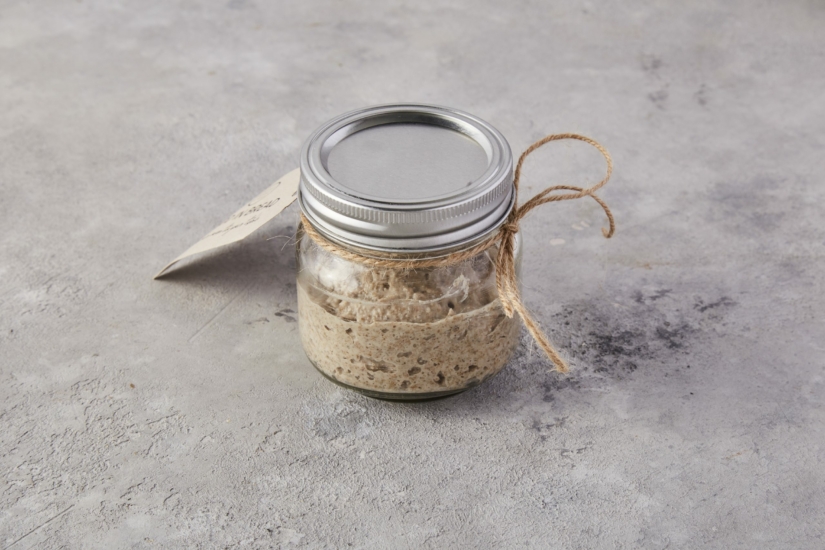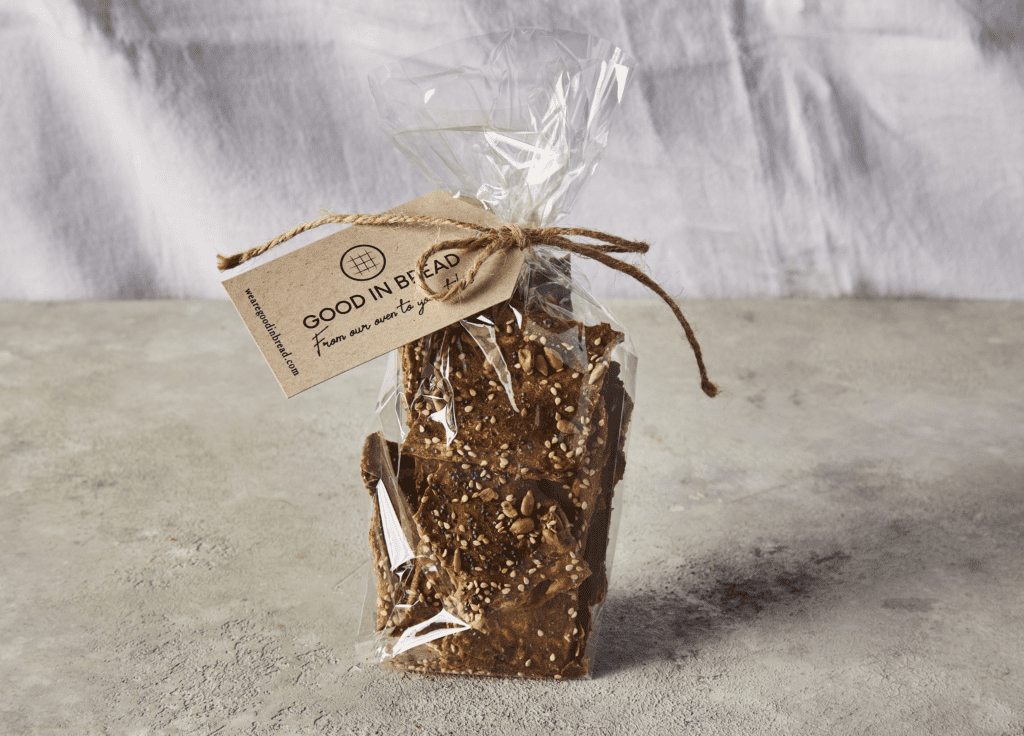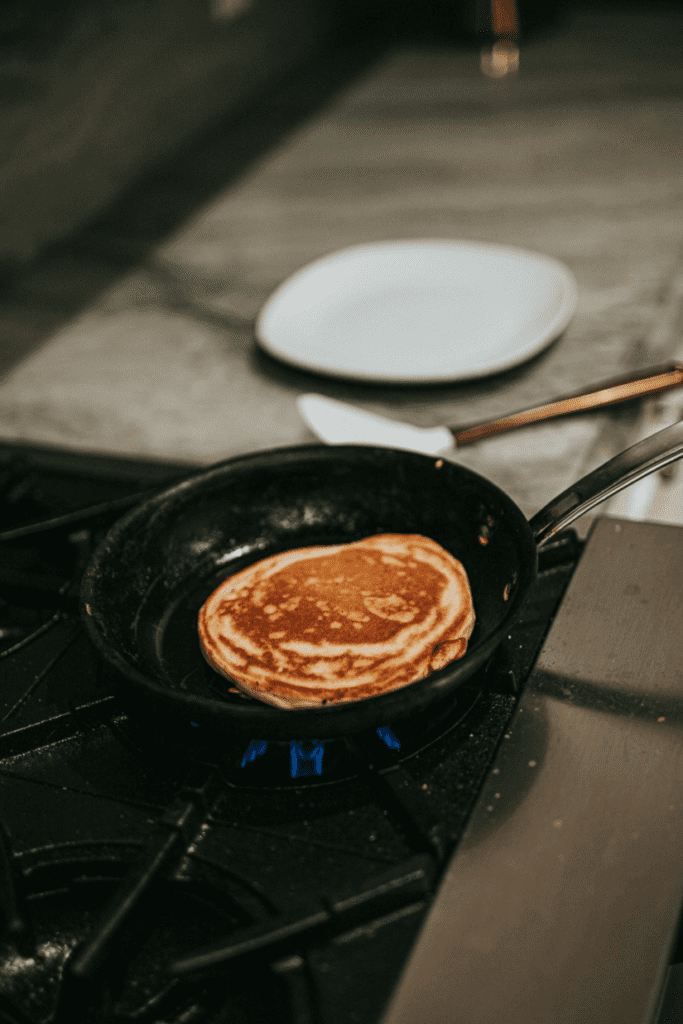23 things you need to know about sourdough starters

Sourdough Starter basics:
Introduction: The ultimate sourdough starter guide.
1. What is a sourdough starter?
2. Sourdough yeast: Does sourdough contain yeast?
3. Difference between sourdough and yeasted bread.
5. What’s the best flour to use for sourdough starter?
6. Sourdough starter recipe: how to make your own sourdough starter.
7. How to feed and maintain a sourdough starter.
8. Should I cover my sourdough starter with a lid?
9. What is a sourdough peak: when is the best time to use a sourdough starter?
10. What is the difference between a starter and a levain?
Troubleshooting:
11. Why does my starter smell bad?
12. Why won’t my starter rise?
13. What is the ideal temperature for my starter?
14. What temperature will kill my starter?
15. Does the quality of starter ingredients make a difference?
16. How often should I feed my starter if it won’t rise?
18. Why do you need to discard your starter?
19. Sourdough discard recipes.
20. Sourdough hooch: what it is, why it forms and how to deal with it.
Other general questions & facts:
21. Do you need more than 1 sourdough starter?
22. Does a sourdough starter get better with age?
23. Where to buy a sourdough starter.
Conclusion
Introduction: The ultimate sourdough starter guide.
Ready to walk into the wholesome world of sourdough? We are here to guide you on your sourdough adventure. It may seem daunting at first, but fear not, this blog will answer all your sourdough questions. From what a sourdough starter is, to how to make it and feed it and then we answer all of your most frequently asked questions. You can also buy a sourdough starter rather than make it, if that makes your life easier.
1. What is a sourdough starter?
A sourdough starter is made of 2 ingredients: flour and water. Super simple. When the mixture of flour and water is left out and exposed to air, wild yeast and bacteria populate it. The bacteria consume carbohydrates and produce lactic acid, which is why sourdough has a slightly sour taste. These bacteria are good bacteria, like the ones you get in yogurt. The most common bacteria in sourdough are lactobacillus cultures, which are good for gut health.
2. Does sourdough contain yeast?
Sourdough starter does not contain any commercial yeast and yeast should not appear on the ingredient list of an authentic sourdough loaf. However, there will be some natural yeast present in sourdough, which forms when the starter is incorporated with the bread dough, during the leavening process (i.e. the process which allows the bread to rise).
3. Difference between sourdough and yeasted bread.
Sourdough bread is healthy and tasty, with very few ingredients. There are so many benefits of sourdough. It contains good bacteria and is richer in nutrients, fibre and minerals than yeasted bread. Furthermore, yeasted bread uses commercial yeast, which accelerates the rising process, ending in a bread that is heavier to digest and less nutritious. Yeasted bread can sometimes be ultra processed (meaning that it contains ingredients like preservatives and additives that you wouldn’t be able to find in a home kitchen or artisan bakery).
In the last decade, ultra-processed food has been getting a lot of heat, and for good reason. British newspapers like the Times, the Guardian and the BBC have been writing about the link between eating ultra-processed foods (UPFs) and chronic diseases such as diabetes, heart disease and even cancer.
Here, at Good In Bread we enjoy spreading awareness about the differences between sourdough, yeasted bread and ultra-processed bread as people tend to demonise carbohydrates due to their high glycaemic index, even though not all carbohydrates are created equal. In fact, sourdough bread has a lower glycaemic index compared to most other bread. Plus, if you freeze bread, the GI lowers even more.
If you want to learn more, read our blog on supermarket vs sourdough or Dr Chris Van Tulleken’s book, Ultra-Processed People: Why Do We All Eat Stuff That Isn’t Food … and Why Can’t We Stop?
4. Is sourdough gluten free?
Most sourdough bread isn’t gluten free, but it is lower in gluten than most bread. However, if you use a gluten free starter you can make gluten free sourdough.
5. What is the best flour to use for a starter?
We believe that rye wholemeal flour is the best flour to use for a sourdough starter because it is the easiest and most manageable flour to work with. It has less gluten than other flours and is therefore less sticky, making it easier to handle and stir. It is also more forgiving with its feeding times. Not only is it a low maintenance flour but it is also super nutritious. It is packed with fibre, B vitamins and iron. Low maintenance and high reward. That is what we want! Also, just because you use a rye flour for your starter doesn’t mean that you can only make rye sourdough bread. You can make any type of bread, including a white country loaf, bagels and even baguettes with a rye starter. The options are endless. If you prefer to buy a starter, rather than make one from scratch, buy one here.
6. Sourdough starter recipe: how to make your own sourdough starter.
If instead you are ready to take on the challenge of making your very own version, follow the instructions below:
A good ratio is 50% flour to 50% water. Start with small amounts (25g flour / 25 g water) so you don’t end up with too much starter that you’ll need to discard. Warm water is best as bacteria thrive in warm environments. Feed it the same amount every 24 hours for 5 days and on Day 5 you’ll have a perfectly ripe and ready starter to make your Sourdough bread with.
You can store it at room temperature or put it in the fridge after you’ve used it, depending on how often you plan to bake. A general rule of thumb is if you are baking bread once a week, you should keep it in the fridge. If you are baking more frequently than once a week (3-4 times per week), you may not need to put your starter in the fridge.
When you are ready to make bread, give your starter a good feed (instructions below) and leave it to ferment at room temperature overnight (8-12 hours) before adding it to your leaven.
7. How to feed and maintain a sourdough starter.
To feed your starter, make sure you discard most of the old starter first, leaving no more than 10g of the old starter in your jar. Then you’ll need to feed it with 50g flour & 50g warm water & mix.
Leave on the counter at 23C in the closed container for 8-10 hours before adding it to your bread recipe or placing it in the fridge.
Refresh your starter as above at least once a week. Leave on the counter for no longer than 10 hours then place it back in the fridge.
8. Should I cover my sourdough starter with a lid?
Yes. It is a good idea to cover your sourdough starter to protect it from fruit flies and dust but also to keep the temperature inside the container nice and warm. If you are storing the starter in the fridge, then make sure the lid is on quite tightly. If, instead, you are keeping it at room temperature, cover it lightly with a paper towel or loosely with a lid.
9. What is a sourdough peak: when is the best time to use a sourdough starter?
A sourdough starter peak is the time in the fermentation process where the yeast is at its strongest. It’s the point where the yeast is at its highest activity level. Although you can use your starter at any stage (unless it is unhealthy), the ideal time to use your starter for baking is when it’s at its peak. Usually, the starter reaches its peak around 6-8 hours after being fed. However, this depends on the temperature and the feeding ratio. If the starter is in a cooler environment or if the feeding ratio is particularly high, it could take as long as 12 hours.
One way you can check that your starter is at its peak is by performing a float test but this test isn’t always that reliable. We think poking the starter with your finger might be a better way to see if the starter is at its peak. Simply poke it with your index finger and if the starter feels bubbly and lively, it is ready to use. It should also smell nice and sour!
Another way to test it is with your eyes. There should be bubbles on the surface of the starter and on the sides of the jar. It should also be well risen, reliably doubling in size 6 to 8 hours after feeding. If you want to check how much your starter has risen, you can try the rubber band method where you place a rubber band on your starter when you first feed it, to see how much it rises.
Note: if your starter has hooch then read below on how to fix it and if it has mould then you probably won’t be able to save it.
10. What is the difference between a starter and a levain?
Levain, also called leaven, is the offshoot of the starter. Below there is a table outlining the differences between sourdough starter and levain.
| Sourdough starter | Levain/Leaven |
| Made of flour & water | Made of flour, water & starter |
| Usually ingredient ratio of 1:1 | Fed at higher ratio than a starter |
| Continually fed & discarded | Made once for a single bake |
| Active | Very active |
| Medium acidity | Low acidity |
If you want to know more about levain you can buy our baking kits which come with a starter and extra flour for the levain. They also come with instructions to ensure that you feel confident in the kitchen.
Troubleshooting your sourdough starter.
All your questions answered and tips and tricks to help you on your sourdough journey.
11. Why does my starter smell bad?
A healthy sourdough starter should smell slightly sour and perhaps yeasty. Although it can smell tangy and a bit like vinegar, if it has a strong smell of vinegar or alcohol it is probably a sign it needs feeding. It should not smell like mould.
12. Why won’t my starter rise?
This could be due to temperature, ingredients, feeding frequencies, type of flour or the quantity of flour used. Read on to find out the solutions to all of these problems.
13. What’s the ideal temperature for my starter?
Sourdough thrives in warm environments, so the ideal temperature is about 23-26 degrees Celsius.
In winter, it can be difficult to maintain the perfect temperature for your starter, but the following tips will help.
1. When it is out of the fridge, keep it in a cabinet, away from any drafts.
2. Wrap your starter in a heating pad.
3. Feed your starter with warm water (around 27-32 degrees Celsius).
Temperatures that are not within this range will not necessarily kill your starter, but they could cause the starter to become over or under active. However, if you are not baking everyday or every other day, you should store your starter in the fridge to make sure your starter doesn’t become overactive. Then take it out of the fridge, feed it and leave it out at the ideal temperature for 8-10 hours. Furthermore, you can store your starter in the freezer if you are going to be away from home for a long period of time and want to slow down fermentation.
14. What temperature will kill my starter?
If your starter reaches approximately 55-60 degrees Celsius it will start to die. This is when the actual starter reaches this temperature though so even if the environment the starter is surrounded by reaches that temperature the actual starter might still be alive. Some people suggest leaving your starter in a turned-off oven to ensure it keeps nice and warm but you have to be very careful if you do this to make sure that nobody turns the oven on when your precious starter is inside. A sourdough starter should last forever if it is treated with some TLC.
15. Does the quality of the starter ingredients make a difference?
Of course! The quality of the starter ingredients is just as important as the ingredients you use to bake your sourdough. We love to use organic rye flour to ensure the bacteria have a maximum quality of good nutrients to feed from. To find out more about our ingredients, read the magic behind our sourdough.
16. How often should I feed my starter if it won’t rise?
If your starter won’t rise you may not be feeding it enough. If you’ve forgotten to feed it for a few days or it has been left in the fridge, you may have to feed it even more than usual (e.g. every 4-6 hours 2 or 3 times in a day) to make up for the lack of regular feeding.
17. Do some flours rise less?
The height at which your starter rises depends on the flour you use. Starters using strong high protein white flours will often rise very high. Whereas flours such as whole wheat or rye may not rise as high. This doesn’t have an effect when baking so you shouldn’t worry about it. The rise is less important than other signs of fermentation like aroma and consistency.
18. Why do you need to discard your starter?
To ensure a healthy active starter, you need to discard most of the old starter in your container. This is why you need to discard most of your starter, leaving only around a tablespoon in the jar before feeding your starter. If you don’t discard any sourdough starter before you feed it, it will have an impact on your finished loaf.
19. Sourdough discard recipes.
You are probably thinking that it’s such a waste to discard all of the starter. Fear not, we have some fabulous recipes to make use of the sourdough discard:
Sourdough discard crackers. You can also buy these crackers on our website if you want to try them first.


We also have some great recipes for leftover sourdough bread on our website. Lots of Italian inspired salads and soups.
20. Sourdough hooch: what it is, why it forms and how to deal with it.
Sourdough hooch is a liquid that forms on top of your sourdough starter, although it can also form in the middle or underneath the starter. Hooch is not harmful. It is simply alcohol and water created from the starter’s wild yeast as it feeds. Hooch has an acetone smell so it smells a bit like nail polish.
Hooch forms when a starter is fed too little or too infrequently. It is a sign that your starter is hungry. It has been neglected and is in dire need of some TLC.
There are 2 main solutions when your starter develops hooch.
- Stir the hooch back into the starter. Don’t worry, the hooch isn’t harmful for your health. Simply stir with a clean spoon or spatula until it is well combined. This is the best option if you want to maintain a blanched hydration in your starter.
- If you really want to get rid of the hooch you can. The hooch is part of the starter’s hydration so is sometimes considered a bad idea to throw it away as it will change the hydration of the starter. However, it is the best option if you don’t want your bread to be very tangy. The hooch will cause the starter to become sourer.
Other general questions & facts:
21. Do you need more than 1 sourdough starter?
No. You shouldn’t need more than 1 sourdough starter unless you kill your sourdough starter. As mentioned before, if your starter has formed hooch, it can still be revived with a few simple steps.
22. Does sourdough starter get better with age?
This is a tough one. Many bakers boast that their sourdough is decades old as with time the flavour of the starter intensifies and gets more sour. However, after a while the increase in flavour plateaus. Furthermore, many bakers agree that the starter’s health is more important than its age. So maintaining the starter well may be the true key to a tasty sourdough.
23. Where to buy a sourdough starter.
At Good In Bread, we offer a starter made with rye flour which is widely considered to be a great flour to use for home bakers as it is more manageable and more forgiving with feeding times. So, you hopefully won’t have to worry about hooch or other problems. We also offer baking kits with all the things you need to bake sourdough bread, bagels and baguettes.
Note: if you don’t live in London, you can find our products on Delli.

Conclusion
We hope that this guide answered all of your sourdough starter questions. If you feel that making your own starter is too time-consuming, remember that we have a ready-made starter and baking kits to help you on your sourdough adventure. You can also buy sourdough bread on our website if you want to taste how the professionals make it before attempting it yourself. If you have any more questions, contact us. Follow us on Instagram and read our blogs to learn more about all things sourdough.

